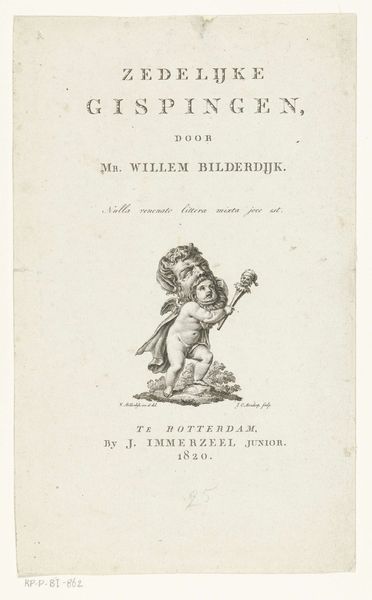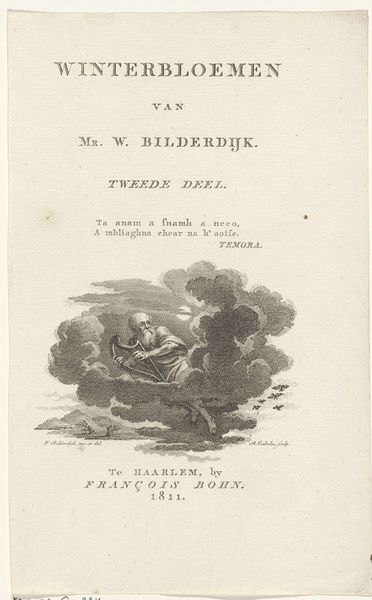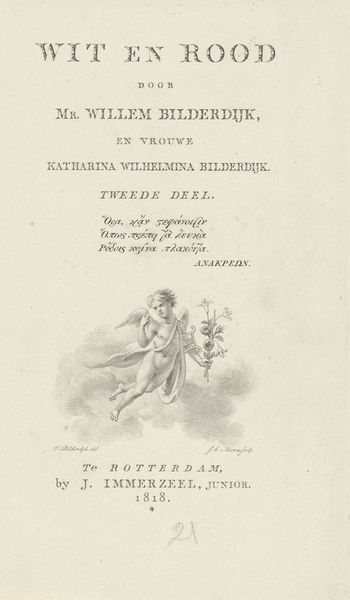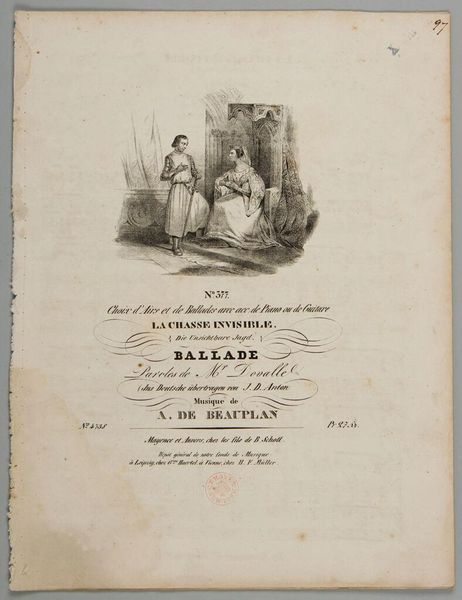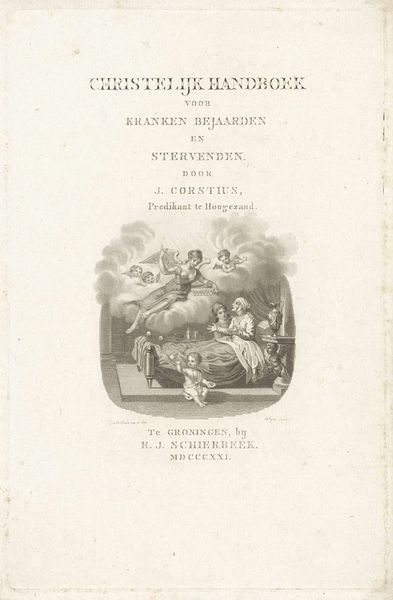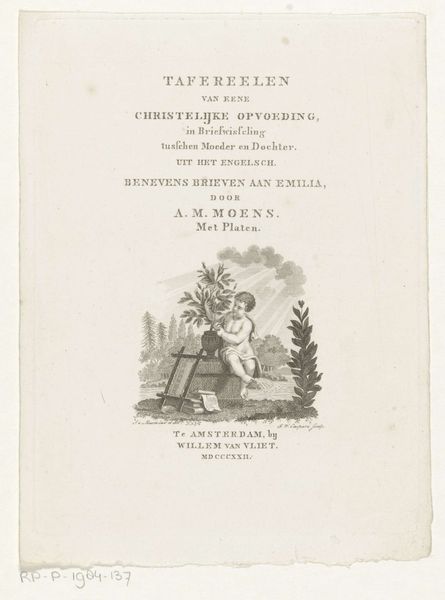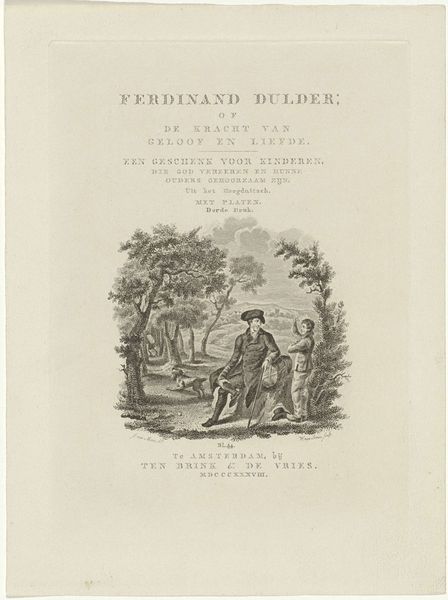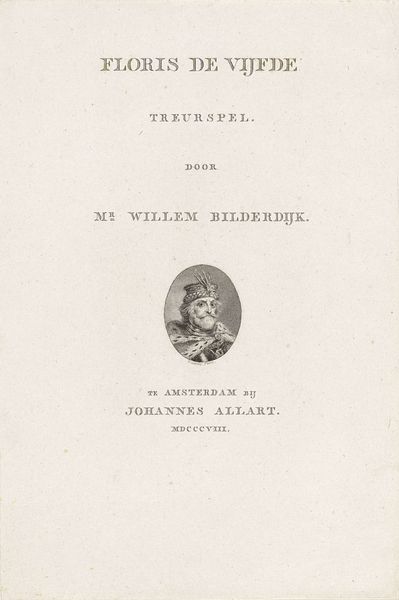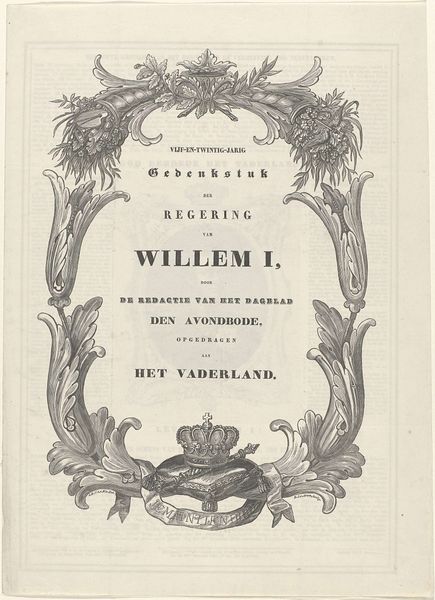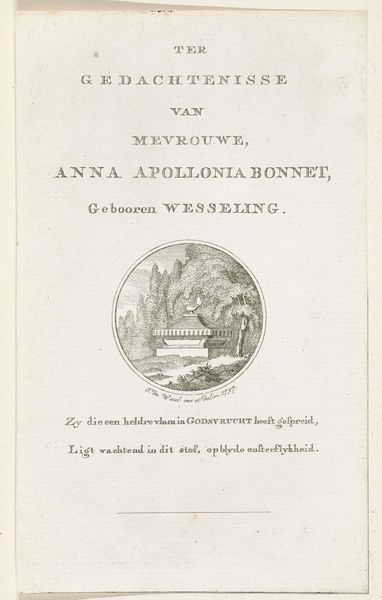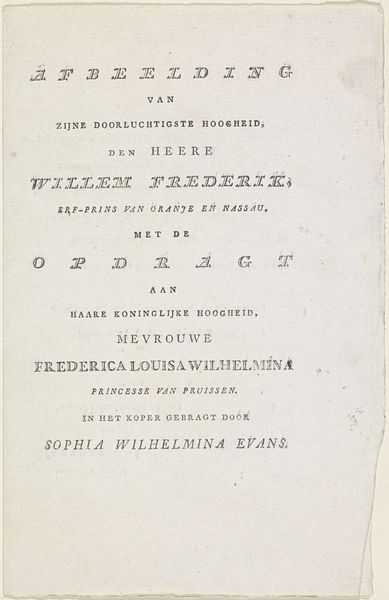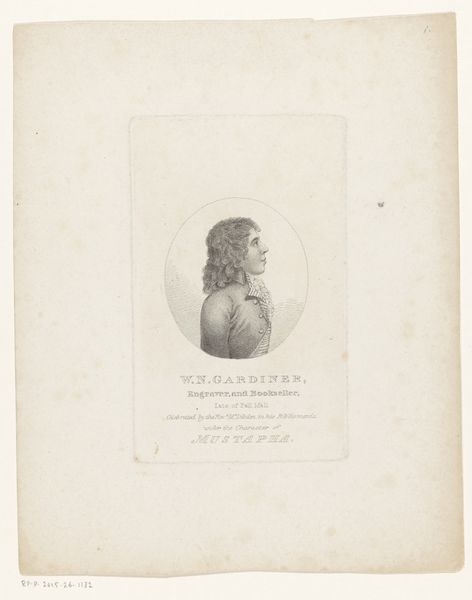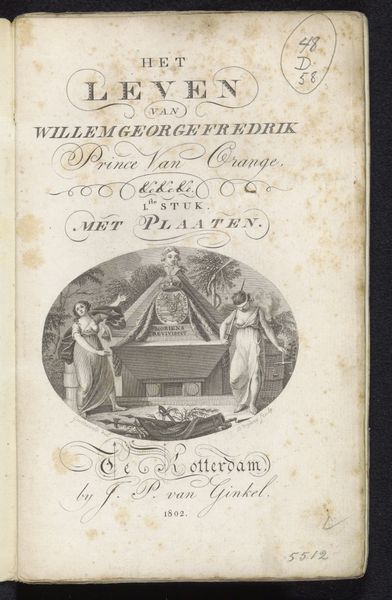
print, engraving
#
portrait
#
neoclacissism
# print
#
engraving
Dimensions: height 214 mm, width 134 mm
Copyright: Rijks Museum: Open Domain
Jacob Ernst Marcus created this print, "Putto bij een mand met bloemen," sometime around the early 19th century. It depicts a cherubic figure, or putto, seated next to a basket overflowing with flowers. Prints like these were often used as illustrations in books of poetry or to mark significant life events. Here, the print appears on the second edition of a poetry book. Given the rise of the middle class in the 19th century, this imagery speaks to notions of domesticity, sentiment, and morality. This putto isn’t just an image of innocence; it reflects a very specific social and cultural construction of childhood. The cherubic figure, combined with the floral imagery, evokes themes of beauty and transience, inviting reflection on life's fleeting moments. The image also prompts us to consider the labor involved in producing such intricate prints and, more broadly, the social structures that supported artistic production during this time. The putto serves as a reminder of the complex ways in which innocence, beauty, and labor intertwine.
Comments
No comments
Be the first to comment and join the conversation on the ultimate creative platform.
